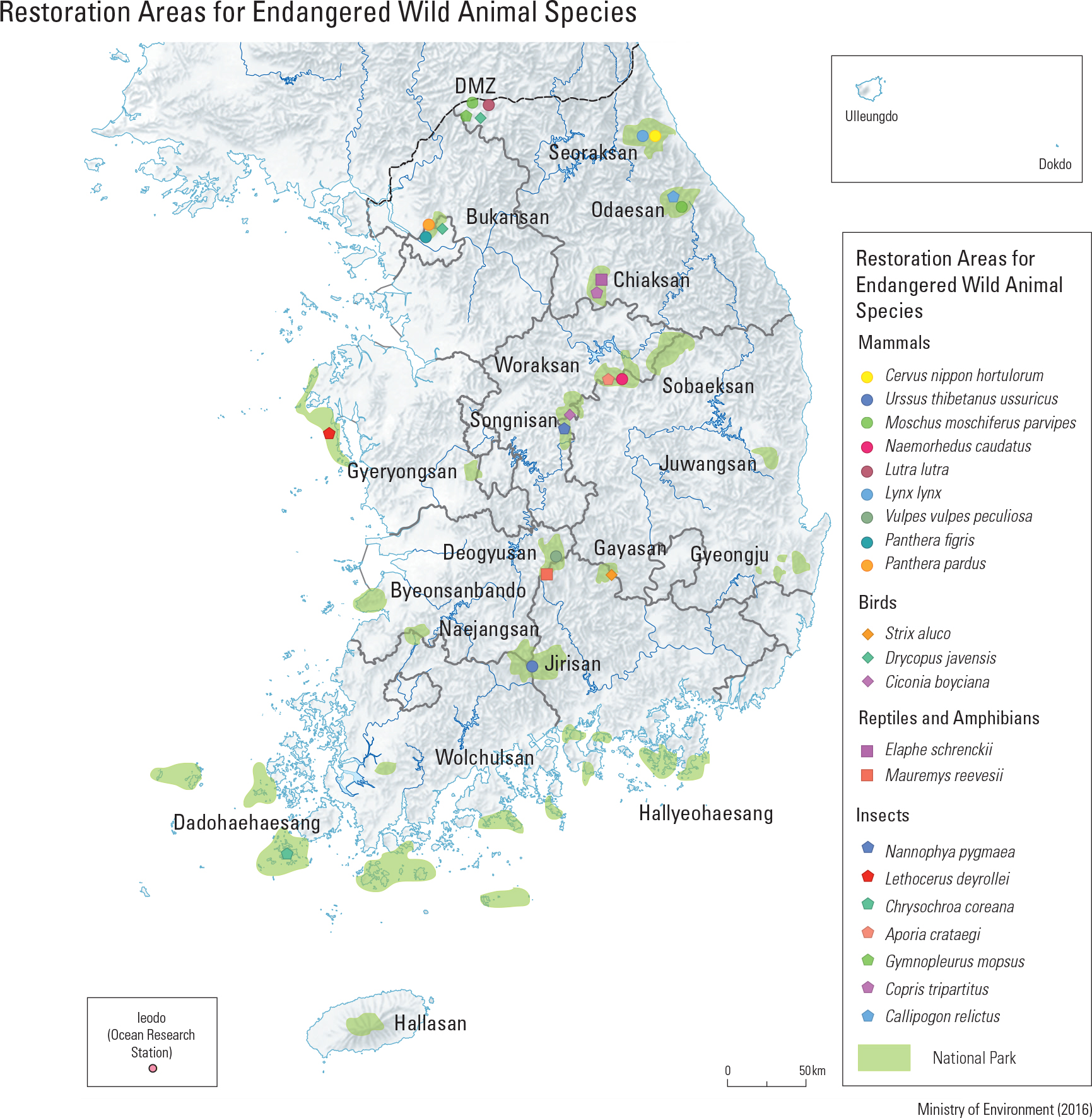English II
Restoration Project for Endangered Wild Species and Animal Species aroud the Demilitarized Zone (DMZ)prevnext
Recovery refers to the process where an endan- gered species is recovered to its original state and is provided ensured means for long-term survival in the wild. Korea is currently pursuing recovery efforts for endangered animals and plants such as the Asiatic black bear (Ursus tibetanus), musk deer (Moschus moschiferus), Oriental white stork (Ciconia boyciana), black shiner (Pseu- dopungtungia nigra), bull-head torrent catfish, (Liobagrus obesus), and wind orchid (Neo netia falcate). Recovery plans for many of these endan- gered species are being constructed and carried out. In the case of the Asiatic black bear and the Oriental white stork, species restoration projects have been approved and are currently being con- ducted by Jirisan and the Eco-institute for Orien- tal Stork of Korea National University of Educa- tion. Also, recovery plans for other endangered species have been suggested and launched. The Asiatic black bear once occupied virtually all mountainous areas stretching across major mountains such as Seoraksan, Odaesan, and Ji- risan. However, reckless human activities such as habitat destruction and overhunting brought about a sharp decline in its population. In 1982, the bear was classi ed as the National Monument to be protected from further endangerment. Ko- rea’s rst measure for the recovery of this species began in 2004 when 6 Asiatic black bears were translocated from Russia to Korea’s Jirisan Na- tional Park. In 2005, 8 bears from North Korea and 6 bears from Russia were further released into the area. As of 2016, there are a total of 44 bears living in Jirisan National Park. In September of 2015, a 3-year old bear was captured in the park, proving that the species has succeeded in natural propagation. The Oriental white stork is listed as an En- dangered Species by the IUCN as it only has a remaining population size of 5,000 in the Amur River basin of Russia. Recovery efforts for the stork have been in place for over 20 years, initiat- ed in 1996 when two juvenile white storks from Russia and two male storks from Germany were delivered to Korea. In April of 2002, the species succeeded in breeding for the rst time in an arti- cial environment. The Eco-institute for Oriental Stork is currently raising 95 storks, while 74 indi- viduals inhabit the Yesan Oriental Stork Park. The storks at the recovery institute are in the process of undergoing survival training in order to be re- leased into the wild. In the near future, the birds will be translocated to its original habitat where they will complete their training before nally be- ing released.
page_2 |


